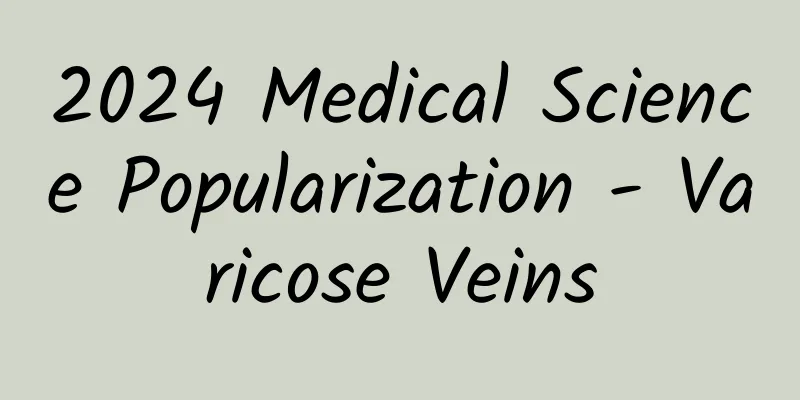2024 Medical Science Popularization - Varicose Veins

|
The great saphenous vein is the longest superficial subcutaneous vein in the body. It is located on the inner side of the lower limb. It originates from the dorsal venous arch of the foot and runs to the groin of the thigh to be injected into the femoral vein. Varicose veins of the lower limbs mainly occur in the great saphenous vein and its branches, mostly on the inner side of the calf. In severe cases, they can extend upward to the inner side of the thigh and even affect the entire lower limb. The main causes of varicose veins of the great saphenous vein are abnormal or absent valve development, poor elasticity of the vein wall or excessive pressure in the veins. The second main causes are family history of varicose veins, long-term standing or sitting, long-term high abdominal pressure, overweight, pregnant women, smoking, deep vein thrombosis, etc. Varicose veins of the great saphenous vein are manifested as elongation, dilation and tortuosity of the diseased superficial veins, and the appearance of tortuous, earthworm-like protrusions on the legs that protrude above the skin surface. They are obvious when standing, but in mild cases may disappear when lying down. Patients with varicose veins of the great saphenous vein often experience soreness, heaviness, fatigue, etc. in the lower limbs, which may be accompanied by pain in severe cases; some patients will experience swelling of the ankles and dorsum of the feet, which may subside after rest; in the later stages of the disease, malnutrition of the skin of the lower limbs may occur, such as dry skin, desquamation, itching, subcutaneous nodules, pigmentation, eczema, skin ulcers, bleeding and other symptoms. The examination of varicose veins mainly includes physical examination and imaging examination, among which color ultrasound is still the preferred examination method. It can not only clearly show the distribution of varicose veins, but also detect the function of venous valves and the patency of deep veins. It is simple, intuitive, non-invasive, and widely used in clinical practice. Treatments for varicose veins include: 1. Conservative treatment, such as using elastic bandages or wearing elastic stockings; 2. Interventional treatment, such as ultrasound-guided sclerotherapy, laser or radiofrequency treatment; 3. Surgical treatment, such as high ligation and stripping of the great saphenous vein. Doctors will choose the most appropriate treatment plan based on the patient's specific situation, and the combination of the above methods is also common. Prevention of varicose veins of the great saphenous vein includes: adjusting lifestyle, quitting smoking and limiting alcohol consumption, and getting adequate bed rest; avoiding standing or sitting for long periods of time and heavy physical labor; and patients with mild symptoms should correctly use elastic bandages or elastic stockings. |
<<: How should patients with epilepsy pay attention to their diet and lifestyle habits?
>>: There are some rules for eating salt! Is iodized salt suitable for you?
Recommend
How much meat is in the "starch sausage" that costs 2 yuan on the street? The answer is guaranteed to surprise you!
Who would have thought that the starch sausages s...
Does Chinese medicine work for adnexitis?
Because some unhealthy lifestyles can cause femal...
What can women eat to cure sexual frigidity quickly?
In fact, the reasons for a woman's sexual ind...
What does early pregnancy thoughts mean?
Pregnancy test strips are mainly used to check wh...
Can malignant ovarian cysts be cured? Be sure to seek timely treatment!
Most ovarian cysts are benign and have not yet fo...
How long should I apply mirabilite to my breasts?
Subacute mastitis refers to a purulent infection ...
Which is better, eating raw peanuts or roasted peanuts?
Peanuts are also known as groundnuts and dicotyle...
Symptoms of varicose veins of the vulva
Pregnancy is a very painful process, because preg...
What should I do if my wrist hurts during confinement?
Some women have problems with their bodies, espec...
December 2024 "Science" Rumors List: Is standing office healthier than sitting office? Fruits should not be heated before eating?
The list of "science" rumors in Decembe...
Women are afraid of heat in summer and cold in winter
Some people say that their hands and feet are col...
What is the reason for the itching and odor in the female genitals?
Nowadays, women are facing more and more health r...
What are the chances of getting pregnant at 45?
After the relaxation of the two-child policy, man...
117-year-old man dies! Is longevity determined by genes or intestinal flora?
BEIJING, Aug. 21 (Xinhua) -- Maria Branyas Moreir...









